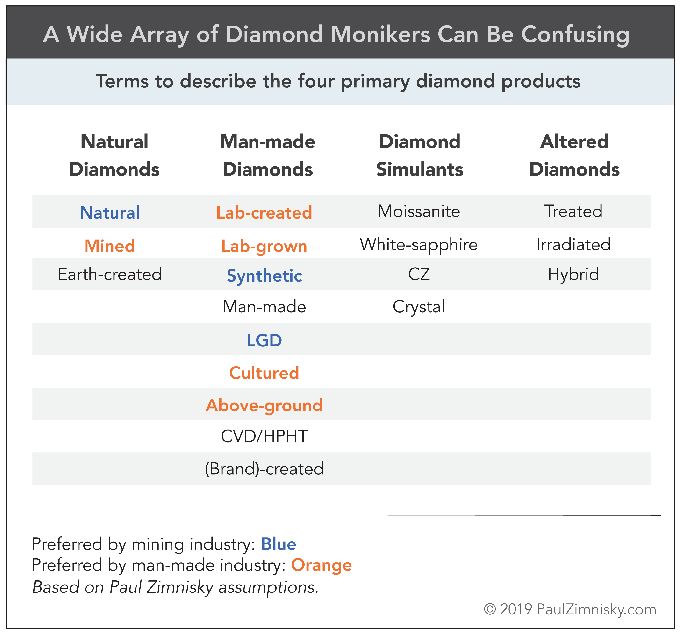When Signet jewelers’ (NYSE: SIG) e-commerce subsidiary James Allen began offering man-made diamonds in May, the company added an additional search tab to the site: “Earth-created diamonds” or “Lab-created Diamonds.” Up until this point, websites offering both products typically defaulted to natural diamonds or simply “diamonds” providing a further filter required to search for the man-made variety.
While this seems somewhat trivial, it highlights the fact that the industry is still undecided in how to present diamonds to consumers following the wider-scale emergence of man-made stones in recent years. Given the wide variation of terms already used by the trade to describe man-made diamonds, adding an “earth-created” qualifier to natural diamonds seems like further convolution at a time when diamond customers are already understandably confused.
These days when a consumer researches what is often times a multi-thousand-dollar diamond purchase they are faced with multiple terms to describe multiple different products, whether it a natural stone, a man-made, a simulant or some other altered version or hybrid. From a marketing standpoint it is understandable why the industry is jockeying with terms to describe these products because it will likely impact a consumer’s perception.

With regard to man-made diamonds, the industry prefers the term “lab” to be included in the descriptor because it evokes a perception of innovation and technological advancement. However, while man-made diamonds do represent these nouns to an extent, most are not technically produced in a “lab,” but rather a manufacturing facility or a factory. Only the research and development typically takes place in a laboratory setting.

